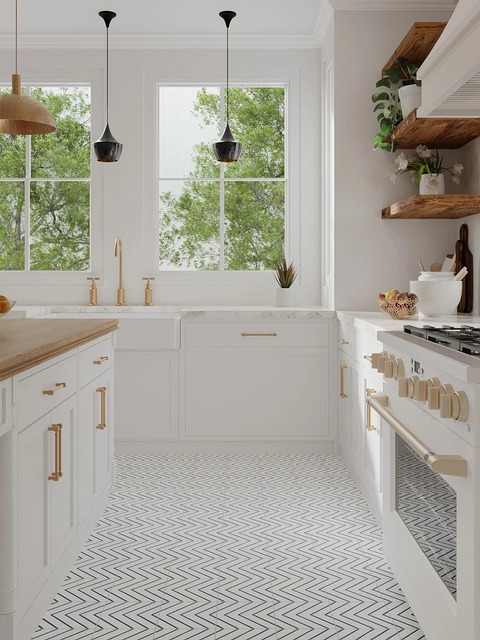Vinyl kitchen flooring is a popular choice due to its diverse styles, durability, and ease of maintenance. It can mimic natural materials at a lower cost, with realistic textures and vibrant colors available. Installation requires careful preparation and professional techniques for a seamless fit, while regular cleaning and quick spill response ensure longevity. Vinyl's water resistance, comfort, and practical features make it an ideal option for kitchens, offering both style and functionality.
Looking to transform your kitchen into a comfortable, practical, and stylish space? High-quality flooring is key, and vinyl kitchen flooring stands out as a top choice. This versatile material offers an array of benefits, from water resistance to easy maintenance, making it ideal for bustling kitchens. In this article, we’ll explore the advantages of vinyl kitchen flooring, guide you through choosing the perfect option, provide installation tips, and share expert advice on maintaining its longevity.
- Understanding Vinyl Kitchen Flooring: Benefits and Versatility
- Choosing the Right Vinyl for Your Kitchen Design
- Installation Tips for a Seamless Look
- Maintenance and Longevity: Keeping Your Vinyl Kitchen Flooring in Top Shape
Understanding Vinyl Kitchen Flooring: Benefits and Versatility
Vinyl kitchen flooring has gained immense popularity due to its numerous benefits and versatility, making it an excellent choice for modern kitchens. It offers a wide range of styles, colors, and patterns, allowing homeowners and designers to create visually appealing spaces that match any aesthetic preference. One of the key advantages is its durability; vinyl can withstand heavy foot traffic, scrapes, and spills without showing significant signs of wear. This makes it particularly suitable for high-use areas like kitchens.
Moreover, vinyl flooring is highly practical as it’s easy to clean and maintain. The water-resistant nature of vinyl ensures that accidental leaks or splashes don’t damage the floor, providing peace of mind in a space where messes are inevitable. Its soft underfoot feel adds comfort to the kitchen experience, making it a practical choice for families and those who spend significant time preparing meals.
Choosing the Right Vinyl for Your Kitchen Design
When selecting flooring for your kitchen, consider vinyl kitchen flooring as a practical and stylish option. Vinyl offers an array of designs that mimic natural materials like wood or stone at a fraction of the cost, making it an excellent choice for those looking to create a visually appealing space without breaking the bank. Moreover, its durability is a significant advantage; vinyl can withstand high traffic areas, moisture, and spills with minimal maintenance.
Choosing the right vinyl flooring involves considering your kitchen’s aesthetic and functionality. Modern vinyl technologies allow for realistic textures and patterns, enabling you to match any design theme. For example, luxe vinyl planks can replicate the look of hardwood, providing a warm and inviting atmosphere. Alternatively, tile-look vinyl offers the versatility of various colours and styles, catering to those seeking a more diverse kitchen design.
Installation Tips for a Seamless Look
When installing vinyl kitchen flooring, ensuring a seamless look requires careful preparation and attention to detail. Begin by cleaning and preparing the subfloor, making sure it’s free from debris and any existing flooring residue. This step is crucial for achieving a smooth finish. Next, measure the area accurately and cut the vinyl sheets to fit perfectly, allowing for minimal waste. Use a sharp utility knife or a specialized floor cutting tool for precise cuts.
For a professional appearance, consider using locking vinyl flooring installations. This method ensures that each plank fits snugly against the adjacent planks, creating a robust and seamless surface. Additionally, it provides better sound insulation and makes cleaning easier. Take your time during the installation process to avoid gaps or overlaps, which can affect the overall aesthetic and functionality of your kitchen space. Regular maintenance, such as vacuuming and spot-cleaning, will also contribute to keeping your vinyl kitchen flooring looking pristine for years to come.
Maintenance and Longevity: Keeping Your Vinyl Kitchen Flooring in Top Shape
Maintaining high-quality vinyl kitchen flooring is a straightforward process that ensures its longevity and keeps your space looking its best. Regular cleaning with mild detergent and warm water is typically all it takes to remove everyday dirt and stains. For more stubborn marks, a soft-bristled brush or a damp mop can be used without causing any damage. Avoiding harsh chemicals and abrasive cleaners is crucial for preserving the floor’s finish.
Over time, vinyl flooring can withstand heavy foot traffic and the constant exposure to moisture, making it an excellent choice for kitchens. Proper maintenance includes quickly addressing spills to prevent water damage and using non-slip mats in areas prone to wetness. With minimal effort, you can keep your vinyl kitchen flooring in exceptional condition, ensuring it remains a practical and stylish addition to your culinary space for years to come.
Vinyl kitchen flooring is a practical and comfortable choice that offers both style and durability. By understanding its benefits, selecting the right type, and following proper installation and maintenance tips, you can ensure your kitchen stays beautiful and functional for years to come. With its versatility and easy care, vinyl flooring is an excellent investment for any home.
